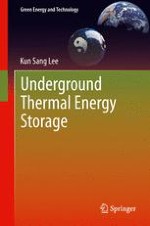2013 | Buch
Über dieses Buch
Underground thermal energy storage (UTES) provide us with a flexible tool to combat global warming through conserving energy while utilizing natural renewable energy resources. Primarily, they act as a buffer to balance fluctuations in supply and demand of low temperature thermal energy. Underground Thermal Energy Storage provides an comprehensive introduction to the extensively-used energy storage method.
Underground Thermal Energy Storage gives a general overview of UTES from basic concepts and classifications to operation regimes. As well as discussing general procedures for design and construction, thermo-hydro geological modeling of UTES systems is explained. Finally, current real life data and statistics are include to summarize major global developments in UTES over the past decades.
The concise style and thorough coverage makes Underground Thermal Energy Storage a solid introduction for students, engineers and geologists alike.
Anzeige
